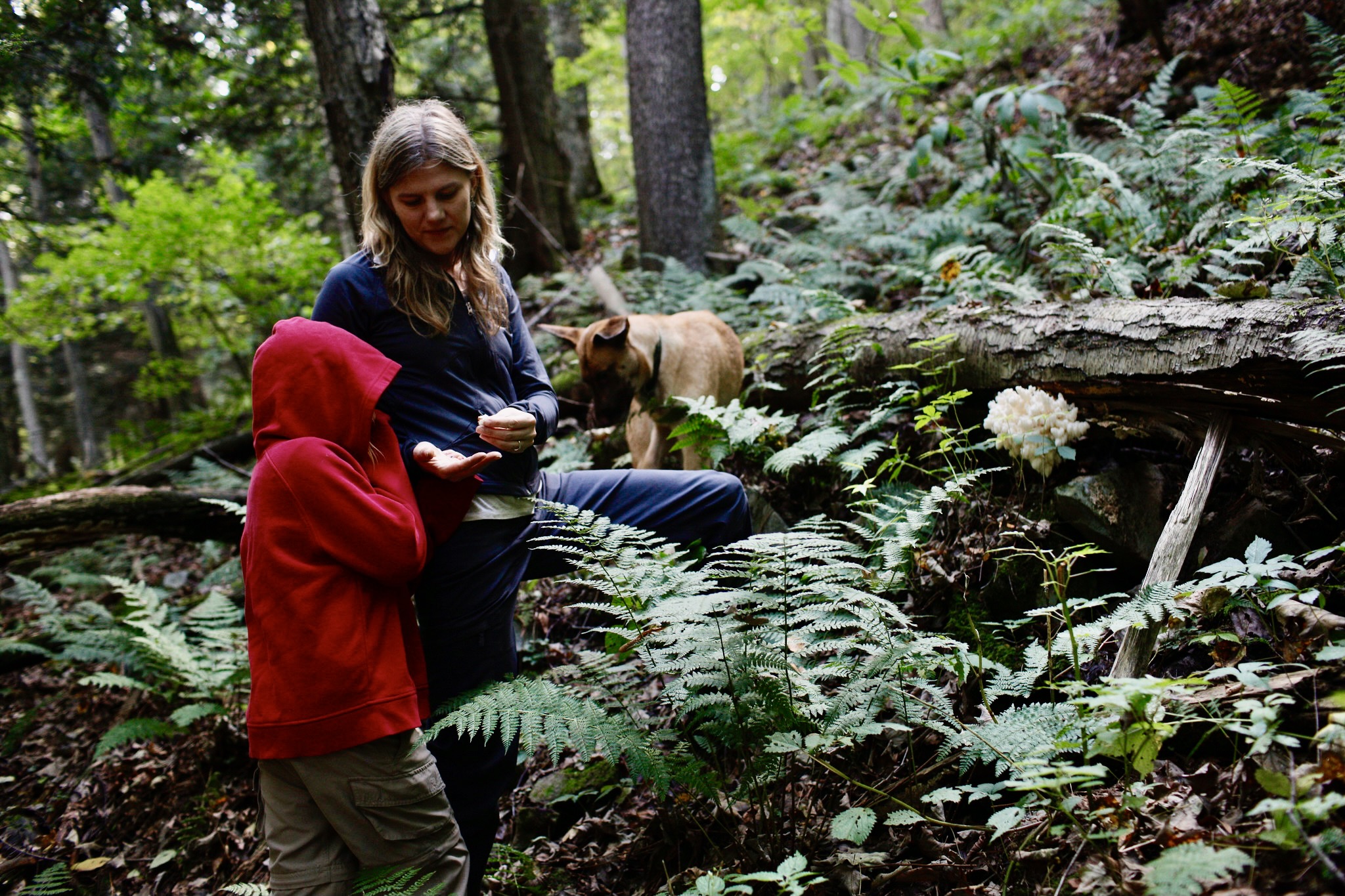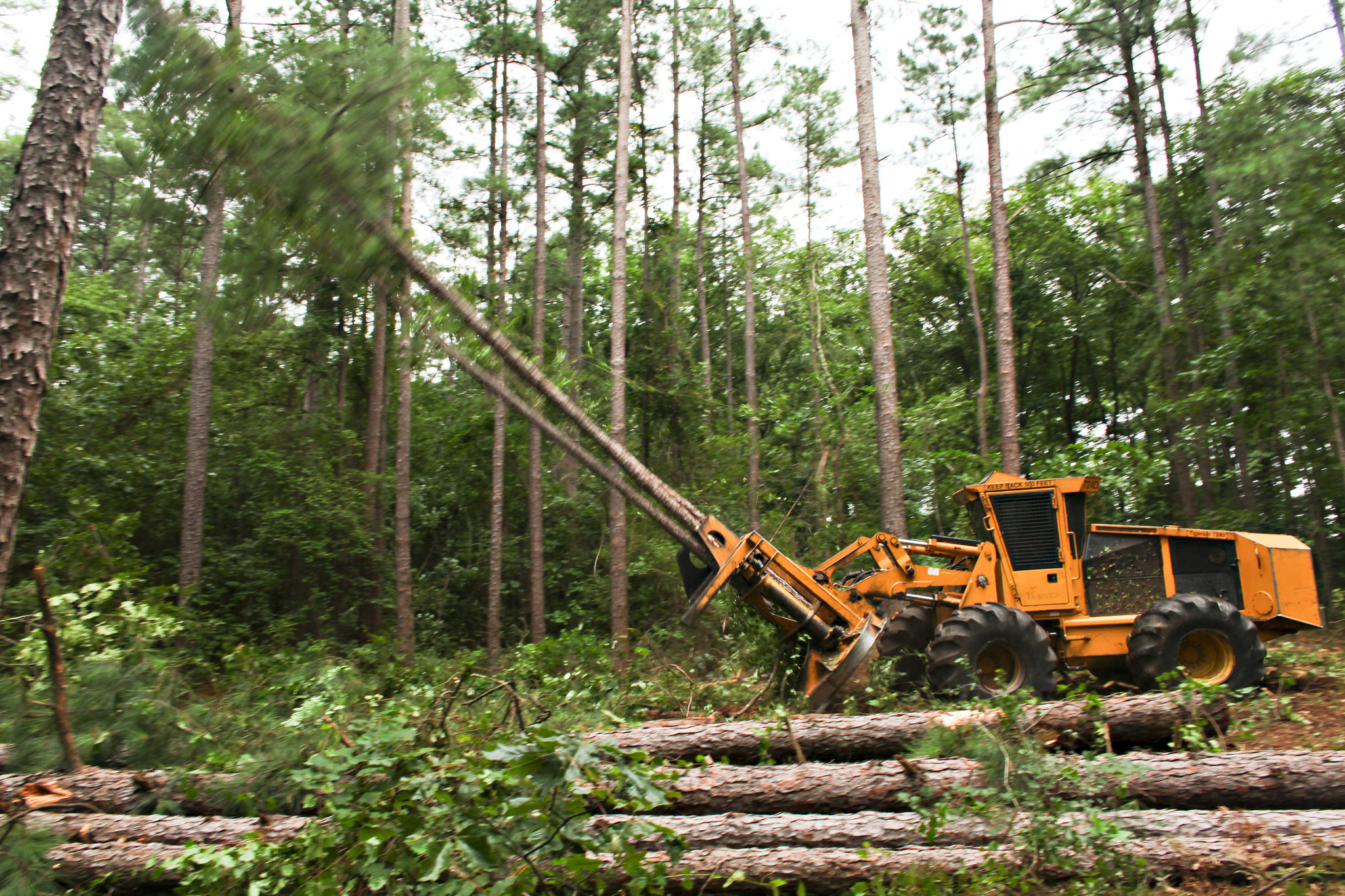By Whitney Forman-Cook with contributions from the Southeastern Partnership for Forests and Water and the Southern Group of State Foresters | This blog is a cross-post and will appear in the Spring 2022 edition of the National Woodlands Magazine.
Forests and trees play a critical role in watershed health and are key to ensuring safe and reliable supplies of clean drinking water across the United States.
It’s hard to fathom, but about 800 million forested acres in the U.S.—covering roughly one-third of the country’s land area—filter and supply more than 50% of the nation’s drinking water. The rest of America’s drinking water is sourced from watersheds that many researchers say could likely be improved through reforestation efforts and enhanced forest management.
The main water-related benefits of healthy forests boil down to:
Improved water quality. Forests filter pollution out of water. Tree roots anchor soil and prevent erosion, and forest soils absorb nutrients and prevent sedimentation and runoff into streams, rivers, and lakes.
Regulated water supply. Tree canopy, branches, and roots store and release water and water vapor, helping to regulate air temperature, precipitation, and streamflows, as well as replenish groundwater aquifers. In wetter months, forests can retain excess rainwater, reducing flood risk and damage. In dryer months, forests can mitigate the effects of drought.
Lowered water treatment and obtainment costs. Managing forests to keep them healthy is significantly less expensive than filtering drinking water at manmade water treatment facilities or moving water supplies over long distances. Many large cities and water utilities across the U.S. know this and are actively pursuing forestry solutions to their water resource concerns.
 Visualizing forests’ role in supplying drinking water across the U.S. is a complex task made much easier with USDA Forest Service data. The agency’s newly released Forests to Faucets 2.0 data and tool package can be used by private and public forest managers to identify important watersheds for drinking water supply (based on population served, forest cover, riparian condition, and hydrology), as well as plan for current, future, or potential threats to source watersheds (including wildfire, forest pests and disease, and land use change).
Visualizing forests’ role in supplying drinking water across the U.S. is a complex task made much easier with USDA Forest Service data. The agency’s newly released Forests to Faucets 2.0 data and tool package can be used by private and public forest managers to identify important watersheds for drinking water supply (based on population served, forest cover, riparian condition, and hydrology), as well as plan for current, future, or potential threats to source watersheds (including wildfire, forest pests and disease, and land use change).
Forests to Faucets data is incorporated into broad-scale forest planning efforts like Forest Action Plans, which provide in-depth analysis of forest conditions and trends in every state, as well as smaller, place-based forest management projects.
What can we do to help forests provide water resource benefits?
The water resource benefits that forests provide can be maximized through thoughtful forest planning and carefully applied management practices. Privately owned forests make up about 60% of U.S. forests. Of those 445 million acres, non-corporate family forestland owners manage about two-thirds, or 298 million acres. This means that purely based on volume, small-tract woodland owners as a collective have the opportunity to make a big and positive impact on forest health—and ultimately watershed health—through forest management.
“Much of the work necessary to creating healthy forests and healthy watersheds starts at the local level and is often undertaken first by family woodland owners,” said Christopher Martin, National Association of State Foresters (NASF) president and Connecticut state forester. “As the primary deliverers of forestry assistance to family forestland owners, state forestry agencies are similarly critical to ensuring that all of America’s forests—and the water resources they provide—are protected and properly managed.”
As the newest member of the national Source Water Collaborative (SWC), NASF shares the expertise of state foresters and their agencies’ 27,000 employees with the collaborative’s other members, which include the U.S. Environmental Protection Agency and dozens of other federal, state, and local partners from across the country. Together, the SWC’s members advocate at the federal level for policies and legislation that protect our water resources through forestry and other means.
Woodland owners like you can directly contribute to enhanced water quality and supply. You might consider the following actions to help raise public awareness about the important connection between healthy forests and access to clean drinking water:
- Educate yourself on the basics by watching this seven-part Forest and Drinking Water video series. These easy-to-digest videos are the perfect introduction to the role forests play in protecting water resources.
- If you’re in the South, consider sharing this data packed infographic and scrolling through this story map. Both quantify the role state and private forests play in providing drinking water to the region.
- Check out this seriously helpful fact sheet that details how landowner groups and other forestry stakeholders can work with the USDA Forest Service to protect drinking water sources.
- Participate in the SWC’s Forestry Learning Exchange. This initiative is mostly webinar-based, but also includes tools and resources for water utilities and other partners interested in collaborating with forest stakeholders to protect drinking water sources.
- Listen to the Keeping Forests podcast. How the River Flows focuses on the integral connection between forests and drinking water.
In addition to spreading the word about forests and source-water, you can help the cause by actively managing your woodlands in accordance with best management practices. Numerous studies have shown that watersheds with greater forest coverage produce better water quality than watersheds with lesser forest coverage. This principle remains true when forests are actively managed, so long as forestry best management practices (BMPs) for water quality are implemented.
What are forestry BMPs? And why should I use them?
Forestry BMPs help ensure water resources are protected before, during, and after forest management operations take place. Due in equal parts to the establishment and monitoring of state forestry agencies’ BMP programs, the tremendous water quality benefits healthy forests provide, and the relatively low impact of forest management activities on water quality, Congress has exempted normal forest management practices from Clean Water Act permitting requirements.
 Forestry BMPs are effective and practical methods for mitigating potential source-water impacts. They’re used to control soil erosion and sedimentation and protect aquatic ecosystems from disturbance. Every state has published BMP guidelines for forestland owners and managers to use; and nationwide, state BMP guidelines serve as benchmark standards for forest certification programs, like those administered by the American Tree Farm System, the Sustainable Forestry Initiative, and the Forest Stewardship Council.
Forestry BMPs are effective and practical methods for mitigating potential source-water impacts. They’re used to control soil erosion and sedimentation and protect aquatic ecosystems from disturbance. Every state has published BMP guidelines for forestland owners and managers to use; and nationwide, state BMP guidelines serve as benchmark standards for forest certification programs, like those administered by the American Tree Farm System, the Sustainable Forestry Initiative, and the Forest Stewardship Council.
In some states, BMP guidelines are regulated. In others, they’re simply recommended. BMPs differ state to state based on local factors, but most states’ BMP guides cover:
- forest road construction and maintenance
- log landings and their restoration
- skid trail construction and maintenance
- streamside management zones (SMZs) and/or forested streamside buffers
- stream crossings
- wetland protection and management
- low-impact timber harvesting
- site preparation
- reforestation
The responsibilities of monitoring, training for implementation, and/or evaluation may be split among a state’s forestry agency and other agencies, but in all states, state forestry agencies lead the collaborative work with key groups and stakeholders that is foundational to incentivizing and reducing barriers to BMP application. This often includes hosting logger training and certification programs, providing pre-harvest planning advice to loggers, offering equipment loan programs, and helping landowners develop forest management plans.
Who Uses forestry BMPs? And do they actually work?
To provide national-level evaluation of the effectiveness of BMPs, NASF periodically surveys all of the states’ BMP programs. In 2015, NASF published its first report on these survey findings. Most recently, in 2019, NASF released a second national update on the use of BMPs. According to this report, loggers and other forest practitioners use BMPs when and where they are needed 92% of the time.
Forestry BMPs have been the subject of many scientific research studies to determine their effectiveness in minimizing impacts to water chemistry, physical properties, aquatic communities, and overall stream health. A recent literature review summarized the conclusions of 81 different studies conducted across the country. While these studies are often region or site specific, they clearly demonstrate a common outcome: forestry BMPs successfully minimize water quality impacts from forestry operations when implemented as recommended by state forestry agencies.
Through effective collaboration and a dedicated commitment to stewardship, forestry BMPs have become institutionalized throughout the sector. In addition to state-led monitoring, mills, timber investment management organizations (TIMOs), and national forests all monitor BMP implementation on lands under their management. Many forest product manufacturers and corporate landowners require contractors to attend formal BMP training workshops, include BMPs in timber sale contracts, and/or procure wood exclusively from landowners who implement BMPs.
Whitney Forman-Cook is the communications director for the National Association of State Foresters. She can be reached by email at wforman-cook@stateforesters.org. The Southeastern Partnership for Forests and Water and the Southern Group of State Foresters contributed to this story.

